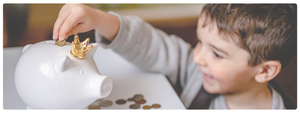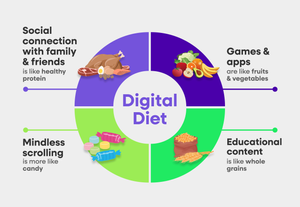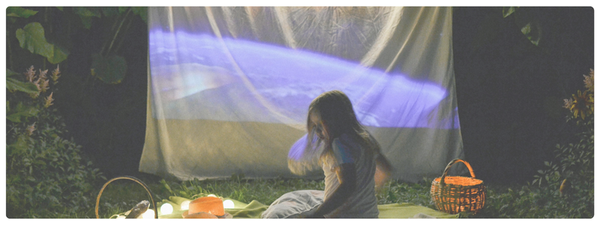If you’ve ever watched your child hesitate at the edge of something new — the top of the slide, a louder birthday party, a more difficult puzzle — you’ve seen confidence forming in real time.
Kids ages 4–7 are in a remarkable stage of development. They’re gaining skills, forming friendships, discovering their interests, and learning how to handle frustration. And through all of that, they’re quietly asking themselves an important question:
“Am I capable?”
The good news is that confidence and self-esteem aren’t personality traits or lucky accidents. They’re skills that are learnable, teachable, and strengthened through everyday experiences. With warm support, realistic challenges, and space to try things on their own, kids build a sturdy sense of self that carries into later childhood and beyond.
This guide breaks down how confidence develops in early childhood, the core principles that help kids believe in themselves, and specific, practical ways you can support that growth in daily life.
Understanding Confidence vs. Self-Esteem (And Why Early Childhood Is a Pivotal Age)
Parents often use “confidence” and “self-esteem” as if they mean the same thing, but they support different parts of a child’s sense of self.
Self-esteem is the deeper belief that “I am good,” “I am loved,” and “I matter.” It reflects how kids feel about themselves at their core — something rooted in connection, emotional safety, and unconditional love.
Confidence is more specific: “I can do this.” It reflects a child’s belief in their ability to take on a challenge, learn a skill, or solve a problem.
Kids need both. Self-esteem provides a foundation of safety. Confidence builds on that foundation by giving them practice in doing brave, effortful things.
Ages 4–7 are a sweet spot where identity, competence, and independence collide. Kids begin telling stories about themselves (“I’m good at drawing,” “I’m shy,” “I can’t do big slides”), and those stories tend to stick. Our job is to help those stories stay flexible, kind, and grounded in growth.
Developmental science backs this up, looking to psychologist Erik Erikson’s stages of development. This concept describes early childhood as a stage where kids begin exploring initiative: trying new things, making choices, and seeing what happens next.
When adults respond with encouragement, patience, and warmth, kids start building a healthy inner story of “I can try things, and it’s okay if it doesn’t go perfectly.” But when their attempts are rushed, corrected too quickly, or met with criticism, kids may internalize guilt or doubt instead. Keeping this in mind makes it clear why early childhood is a powerful window for nurturing both confidence and self-esteem: kids are actively forming beliefs about their own capability, and our reactions help shape those beliefs.
What Confidence Looks Like During Early Childhood
Confidence doesn’t always appear as boldness or fearlessness. Sometimes it shows up in small ways — trying to tie their own shoes, attempting a tricky LEGO build, asking another child to play. A confident child might keep going after a mistake, show curiosity in new settings, or ask questions when they’re unsure.
But you’ll also see plenty of perfectly normal moments where confidence wobbles. Kids may hesitate before joining a group, compare themselves to siblings, melt down when something feels “too hard,” or cling a little longer than usual in busy environments. These aren’t red flags — they’re developmental crossroads where your support helps shape how they respond next time.
How Confidence Actually Develops: The Competence Loop
Confidence grows through a simple but powerful pattern:
- A child tries something a little challenging.
- They struggle, experiment, and problem-solve.
- They experience a small success — or simply learn that they can keep trying.
- Their brain stores the message: “I did that. I can try again.”
This competence–confidence loop shows up throughout life, even for adult professionals, but it gets its start right here and now. The more often kids complete it — especially with your calm support nearby — the more resilient their confidence becomes.

Where we sometimes get stuck is in wanting to help too much. When we jump in quickly or solve a problem for them, we interrupt the loop right when the learning is richest. Slowing down, stepping back, and letting kids feel a bit of productive struggle gives their confidence room to grow.
The Six Core Principles of Building Confidence and Self-Esteem (Ages 4–7)
These principles anchor healthy confidence development and make the practical strategies later in this article work even better.
1. Let Them Try (Even When It’s Messy)
Kids need practice moving through autonomy and frustration, not escaping it. When something feels challenging — zipping a jacket, opening a snack, sharing toys, approaching a new friend — your calm presence helps them stay in the moment long enough to figure things out.
“I’m here if you need me” gives comfort without taking over. Kids learn that frustration is a feeling they can move through, not a sign they should give up.
2. Praise the Process, Not the Outcome
Research shows that effort-focused feedback (“You kept trying even when it was frustrating”) builds more resilient confidence than ability-focused praise (“You’re so smart”). Kids quickly pick up on whether your praise is about who they are or what they do. When you notice strategies, persistence, creativity, or bravery, you help them connect confidence to choices they can control — not fixed traits.
3. Offer Real Responsibility
Kids feel capable when they feel helpful. Small responsibilities like feeding a pet, watering a plant, wiping a table, or helping sort laundry aren’t chores in the adult sense — they’re messages of trust. When you say “I think you can handle this,” you strengthen both self-esteem and autonomy.
4. Model Healthy Self-Talk and Self-Compassion
Kids absorb the way you talk to yourself. If they hear you say, “I messed up, but I can fix it,” they learn that mistakes are survivable. When they see you breathe through stress instead of spiraling, they learn emotional regulation.
When they watch you try something new and narrate your process, they learn how capable adults handle hard things. Modeling is one of the quietest but most powerful confidence builders.
5. Build Emotional Skills Alongside Practical Ones
Confidence isn’t only about being able to ride a bike or complete a puzzle. It’s also about being able to recognize when they’re overwhelmed, name the feeling, and use a calming tool.
Kids who understand their emotional world and learn to manage and regulate their own emotions, with parental coaching, are more willing to attempt new things because they trust themselves to handle the feelings that come with challenge. Emotional literacy and confidence grow hand in hand.
6. Lead with Unconditional Warmth
Confidence thrives in relationships where kids feel safe, supported, and accepted. When you separate behavior from identity — “I didn’t like that choice, but I love you completely” — you anchor a child’s sense of worth.
That enduring parental warmth is linked to better coping, self-esteem and social relationships later. Kids who feel safe trying, failing, and trying again develop deep self-esteem that isn’t shaken by small mistakes.
Practical, Everyday Ways to Build Confidence and Self-Esteem in Early Childhood
With the core principles in place, the daily “how” becomes much clearer.
Give Guided Choices
Kids at this age love independence but can feel overwhelmed by too much freedom. Offering two to three clear choices helps them feel capable without feeling lost.

Supportive autonomy has been shown to support better executive function in kids and throughout growth. Choosing between two shirts, two snacks, or two jobs (“Do you want to carry the napkins or the forks?”) gives them a sense of agency. These small choices gradually build an internal belief of “I can make decisions.”
Create Gentle “Stretch” Challenges
A stretch challenge is something just above your child’s current ability: a slightly bigger puzzle, a scooter ride a little farther than usual, or a friendly hello to another child at the park. The goal isn’t mastery on the first try but exposure, curiosity, and a sense that new experiences can feel exciting, not scary.
When kids regularly enter the “stretch zone,” they develop an intuitive trust in their ability to grow. This can be combined with the message that growth happens through discomfort. Embracing experiences outside their comfort zone helps build their growth mindset.
Use Think-Aloud Problem Solving
Kids learn problem-solving by hearing you talk through your own thinking. Saying things like, “This jar is really tight. First I’ll try twisting harder. If that doesn’t work, I’ll try tapping it on the counter,” gives them a blueprint for how to approach their own challenges.
Over time, kids begin narrating their own process, which strengthens confidence from the inside out.
Normalize Mistakes (Theirs and Yours)
Mistakes are often the very moments that shape a child’s self-story. When spills, errors, and frustrations show up, your response matters. A simple “Whoops, that didn’t go how you wanted — what’s the next step?” helps kids stay open to trying again.
Modeling lightness around your own mistakes (“Oops, I forgot my keys. Let’s figure out what I need next time.”) teaches kids that being human is not something to be embarrassed about. You can also use digital play as an opportunity to model healthy mistake-management. During co-play, you can lean into the fun side of failing and making wrong choices, in the safe, easy-to-try-again environment of a video game.
Prioritize Open-Ended Play
Play is where confidence really takes root. When kids build forts, invent characters, construct worlds, or experiment with art materials, they’re practicing persistence, imagination, and problem-solving.
They test ideas, hit limits, try again, and discover what they’re capable of, all within a world they control. Open-ended play gives kids the autonomy and freedom to explore without fear of being “wrong.”
Celebrate Progress, Not Perfection
Kids love visible signs of growth. You can make progress part of your home culture by pointing out how far they’ve come (“Last month tying shoes felt huge — now you’re almost doing it on your own!”), keeping a simple progress wall, or noticing small improvements at bedtime.
When progress becomes the focus, kids stop fearing mistakes and start valuing effort. Digital play is another way to build this kind of resilience.
Strengthen Social Confidence with Practice and Reflection
Friendships become more meaningful during this age range, so kids may need support navigating play, turn-taking, sharing, or resolving small conflicts. Instead of stepping in immediately, guide them before and after social situations. And, yes, they can also look to digital experiences to bolster social skills — friends are made everywhere these days, not just on the playground.
You might role-play how to ask to join a game, or talk afterward about what went well and what felt tricky. These conversations help kids feel more prepared and less anxious in social settings, which boosts confidence.
How to Support Confidence When It Wobbles
Even the most confident child has wobbly moments. These small setbacks are opportunities to strengthen resilience. Here’s how to support them in ways that help confidence bounce back.
When They Say “I Can’t”
“I can’t” usually means “This feels big.” Respond gently and keep the door open.
- “It feels really hard right now — what’s one small step you want to try?”
- Stay nearby, calm and supportive.
Kids learn that frustration is temporary, not a stop sign.
When They Make a Mistake They Care About
Disappointment can feel enormous at this age. Try to:
- Validate first: “You’re upset because this mattered to you.”
- Revisit later with curiosity, not pressure.
When kids feel seen, they’re more willing to try again.
When Another Child Hurts Their Feelings
Social bumps can shake confidence quickly. Be sure to:
- Reassure them the behavior wasn’t about their worth.
- Talk through what happened and identify kinder peers.
You’re helping them separate “how someone treated me” from “who I am.”
When They Compare Themselves to Others
Comparison shows up earlier than most parents expect. You can:
- Keep the focus on growth: “Everyone learns differently.”
- Bring attention back to their path: “What are YOU working on right now?”
Kids begin measuring progress inward instead of outward.
Supporting Different Temperaments
Confidence grows differently for each child. Tailor your approach to your own child’s temperament, which may also change as they grow — or even throughout the day, as so many parents know!
- Shy/slow-to-warm kids: Give time to observe before joining.
- Energetic kids: Provide structure and physical outlets.
- Sensitive kids: Use gentler transitions and coping tools.
- Strong-willed kids: Offer choices and collaborate on solutions.
Understanding temperament helps you tailor support — and meet your child where they are.
Everyday Routines That Quietly Build Confidence
You don’t have to carve out extra time to build your child’s confidence. Small shifts in daily routines create lasting change.
A morning question like, “What do you want to try today?” sets a tone of curiosity and growth.
After school, asking, “What was tricky today?” normalizes struggle without shame.
At dinner, inviting kids to share something they’re proud of encourages reflection.
And at bedtime, ending the night with “You’re loved no matter what” anchors everything in unconditional connection.
Why Confidence and Self-Esteem in Early Childhood Matter Later On
Kids who experience healthy confidence and self-esteem during ages 4–7 are more likely to engage in school, take thoughtful risks, and feel steady in friendships. They learn to handle frustration, stick with challenging tasks, and bounce back from setbacks. Long-term studies show that the family environment in early childhood predicts self-esteem (and other outcomes) even into young adulthood.
Over time, this early foundation supports emotional health, social resilience, academic engagement — and in many cases helps shape future leadership and problem-solving capacity. But beyond measurable outcomes, the greatest gift is this: a child who feels at home in their own skin, who knows they can try, grow, fail, and try again, without ever losing their sense of worth.
Raising Confident Kids in the Digital Era
Kids today grow up in a world where digital experiences are part of everyday life, which means confidence and self-esteem aren’t built only through offline moments anymore. When used intentionally, digital play can support the same skills we nurture in real life: curiosity, persistence, emotional regulation, and the feeling of “I can do this.”
Research shows that well-designed digital activities can strengthen self-regulation, problem-solving, and agency, all of which feed confidence and self-esteem. What matters isn’t eliminating screens, but choosing digital experiences that give kids room to explore, make decisions, try again after mistakes, and feel proud of their efforts.
Whether those moments happen during a craft project, on the playground, or inside a thoughtfully designed game, the message is the same: “My actions matter, and I can grow.”
Care Bears + Nurture: Digital Play for Confidence & Self-Esteem

This is exactly the heart behind Nurture’s new Care Bears Adventure, Badge Buddy. In this adventure, kids help Jojo the kangaroo restore the Care Bears’ belly badge powers: a playful loop of exploring, problem-solving, and celebrating small victories. Each interaction gives kids low-stakes practice with persistence, critical thinking, and recognizing their own strengths.
As Jojo discovers her unique “Curiosity Buddy Badge,” children experience a gentle reflection of their own growing confidence and individuality. Badge Buddy turns digital play into a place where kids feel competent, valued, and capable — and where helping others shine helps them shine too.
Get the app to start playing — and building confidence, self-esteem, and other critical life skills with your kids!





 Copy Link
Copy Link
 Share
to X
Share
to X
 Share
to Facebook
Share
to Facebook
 Share
to LinkedIn
Share
to LinkedIn
 Share
on Email
Share
on Email


